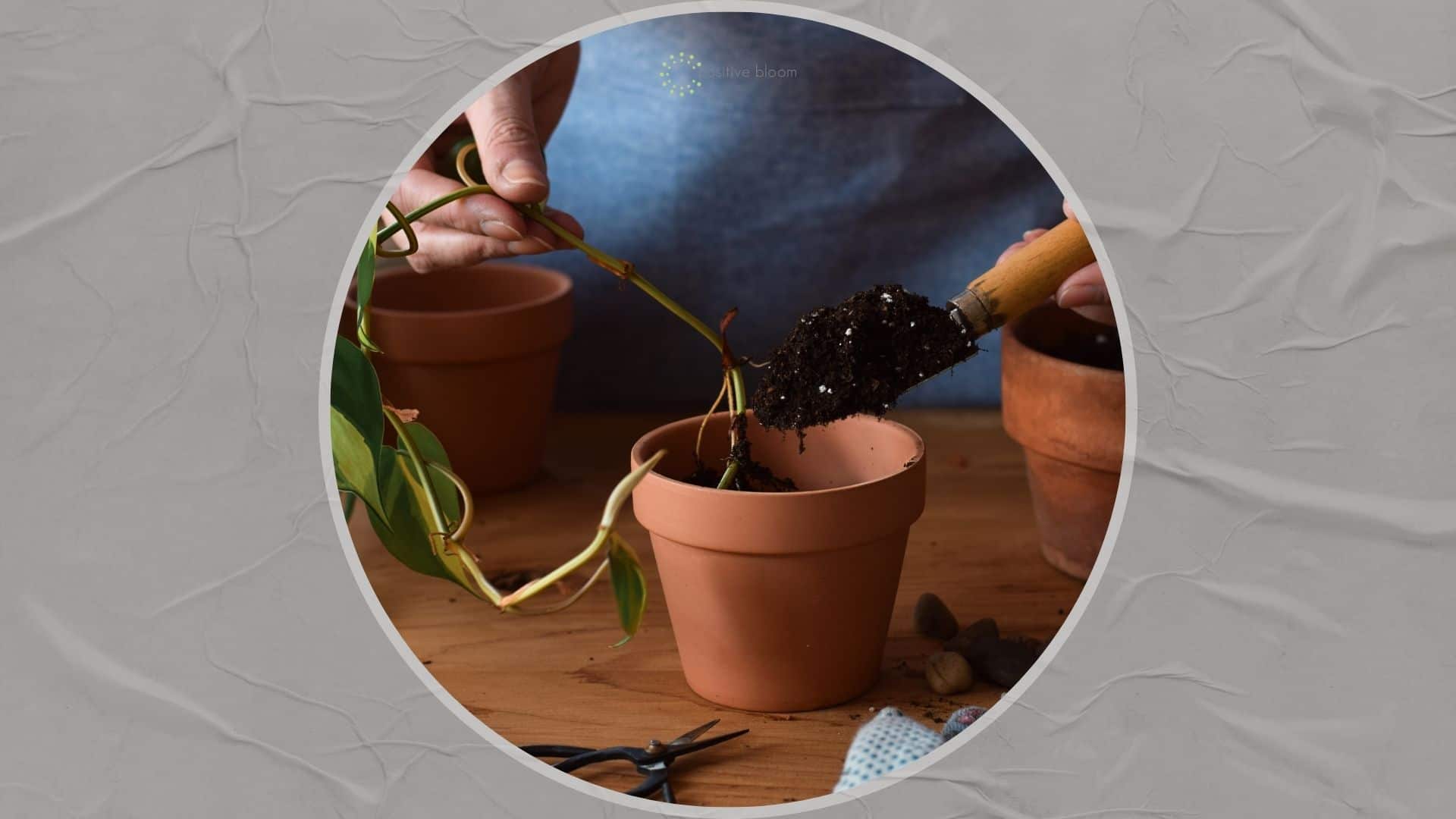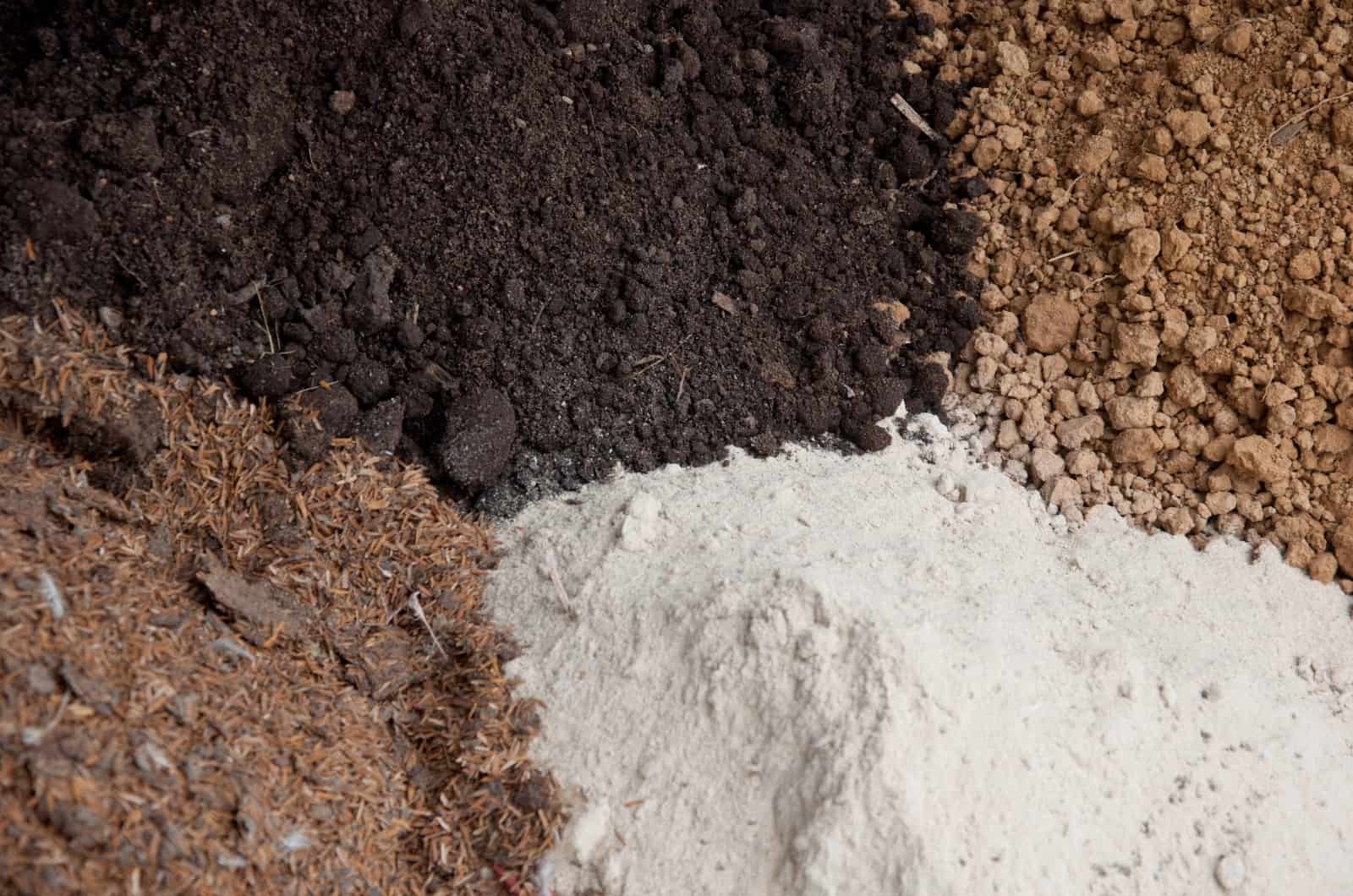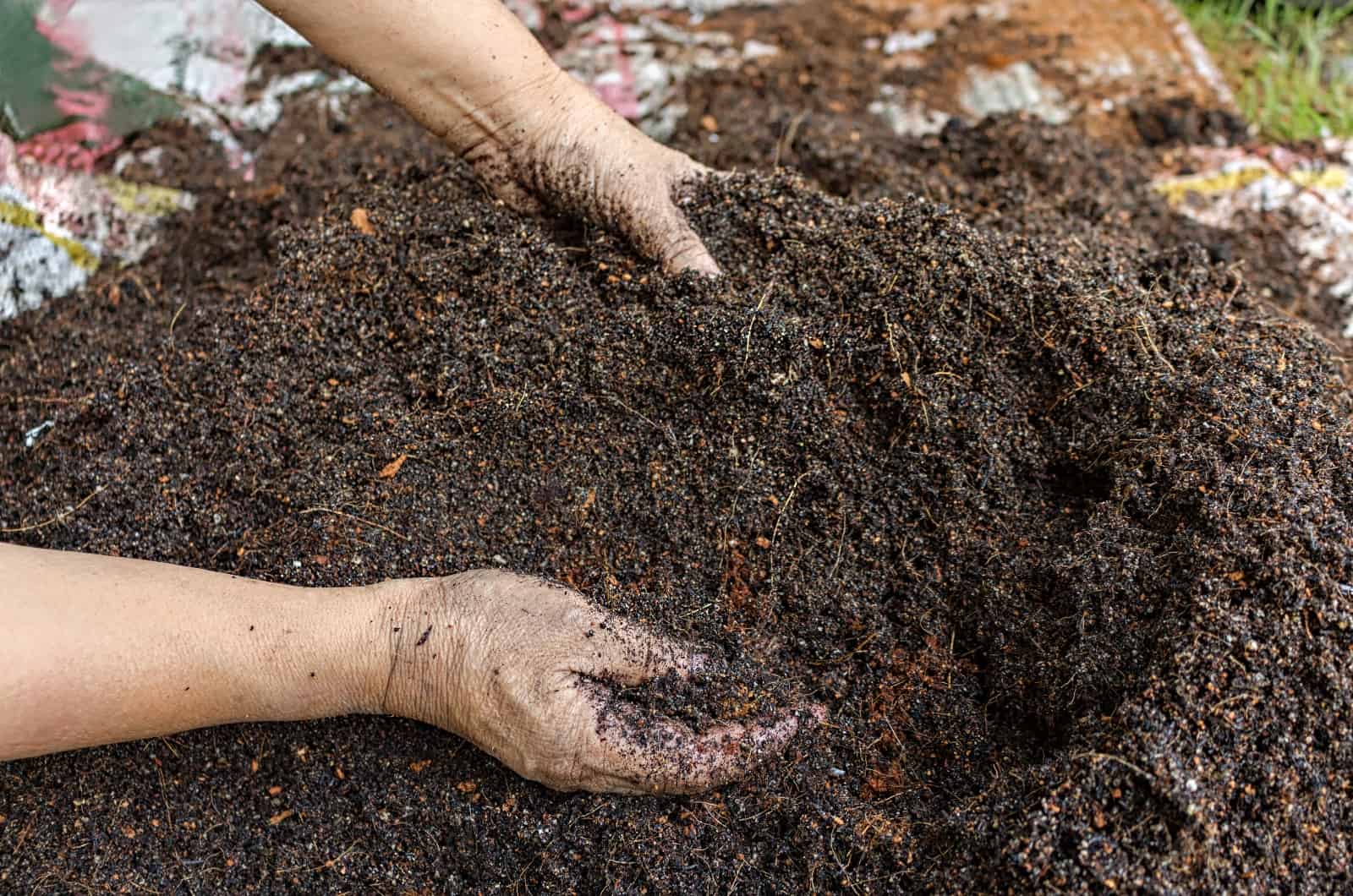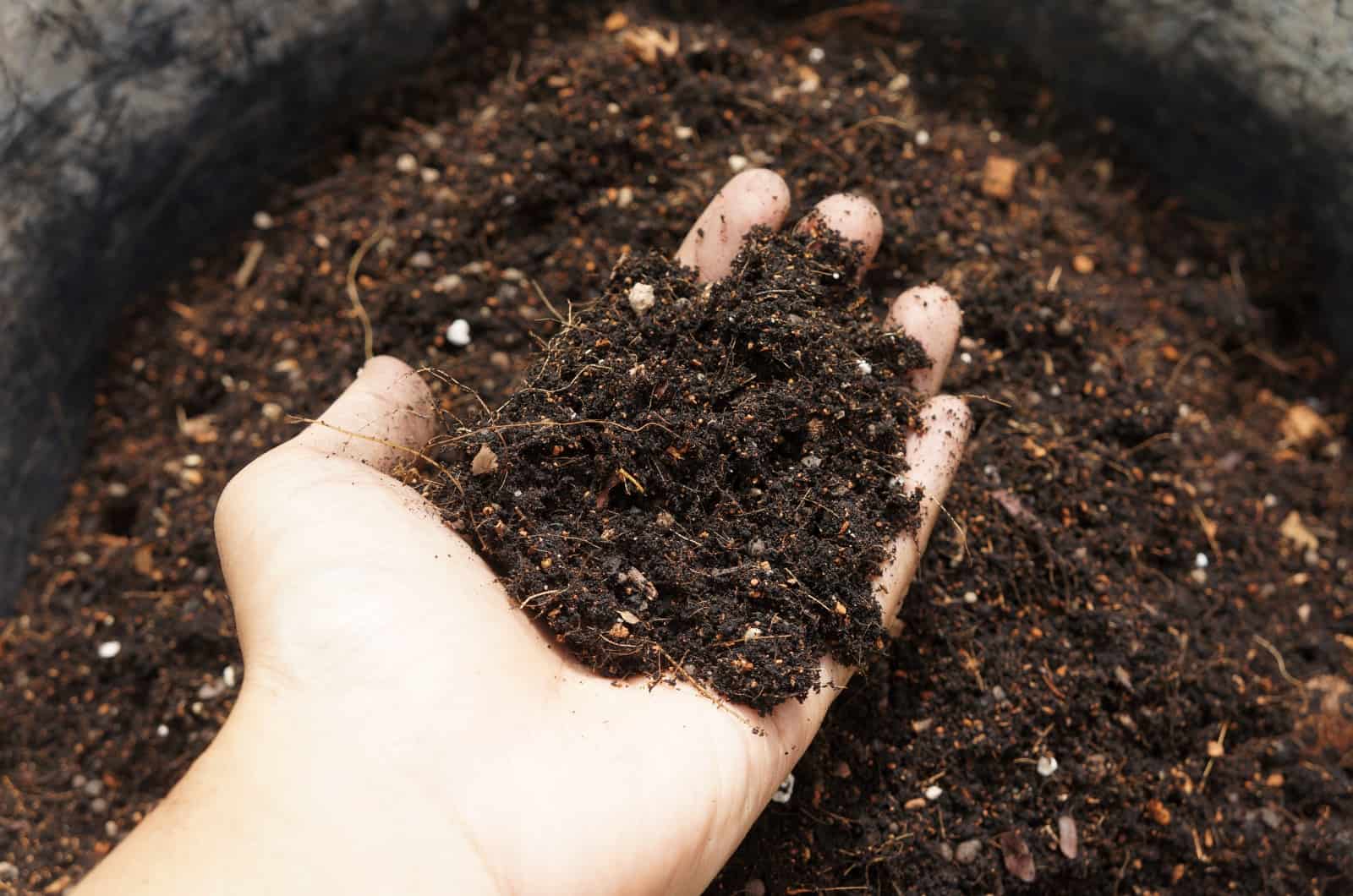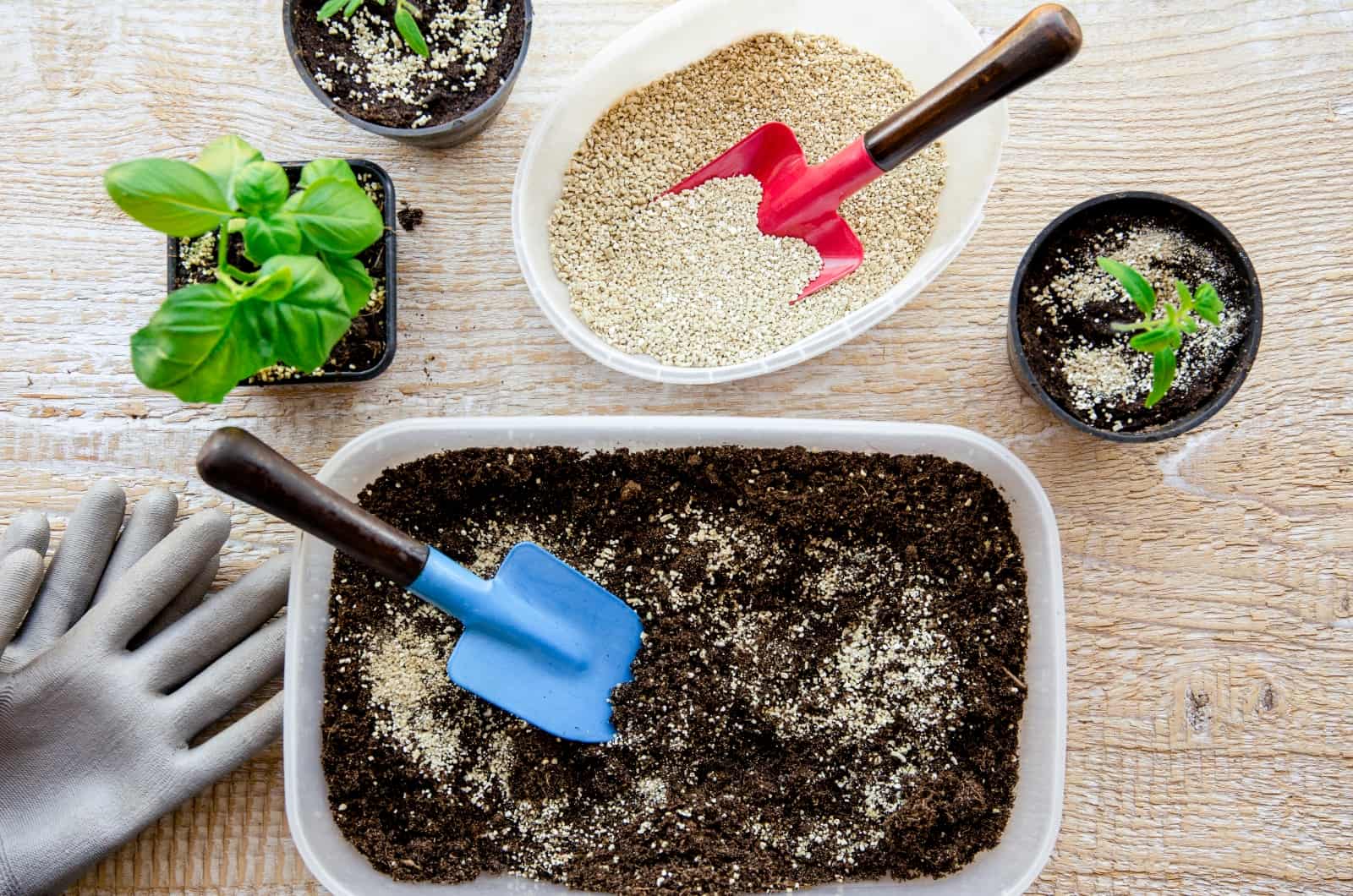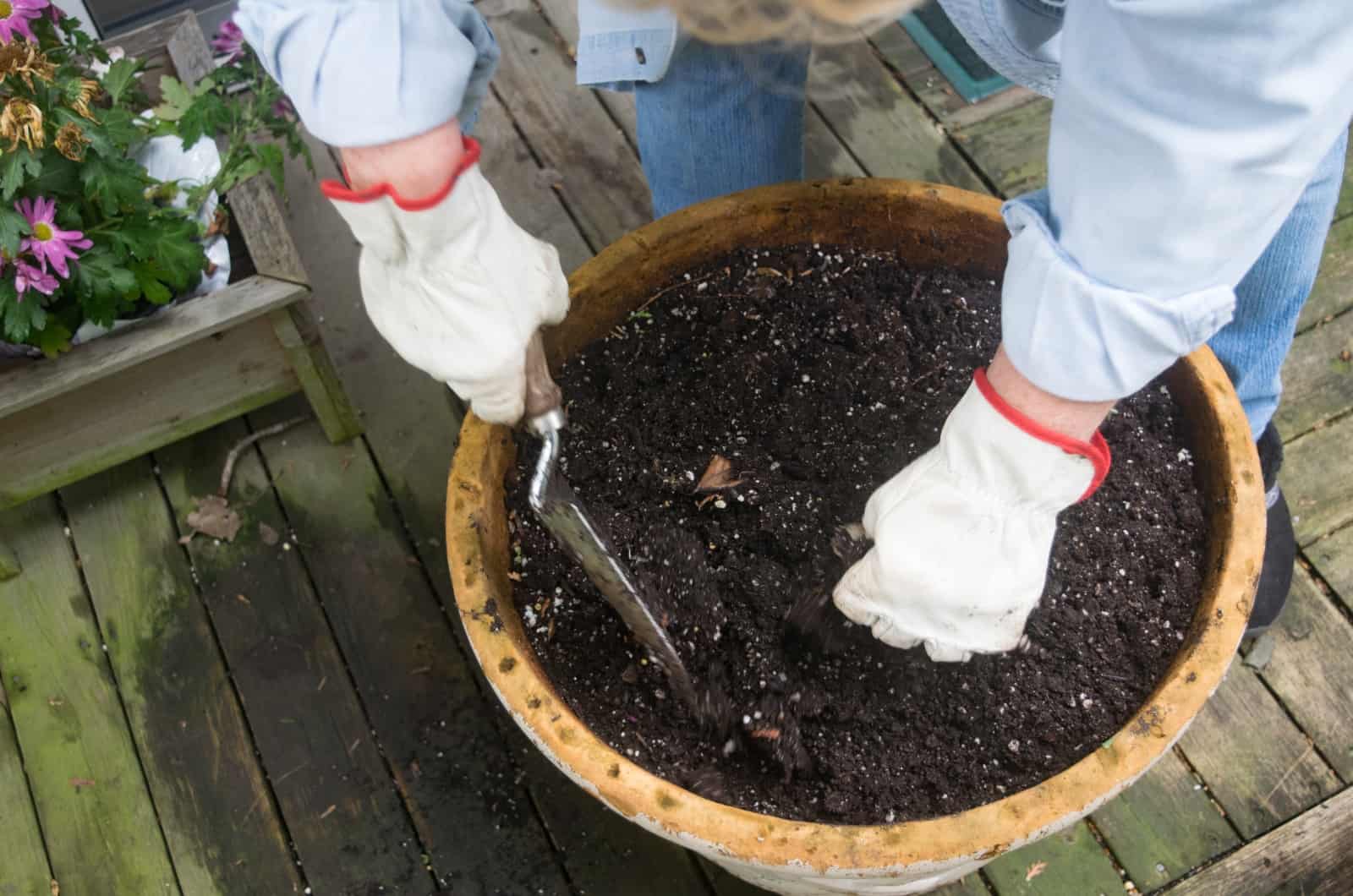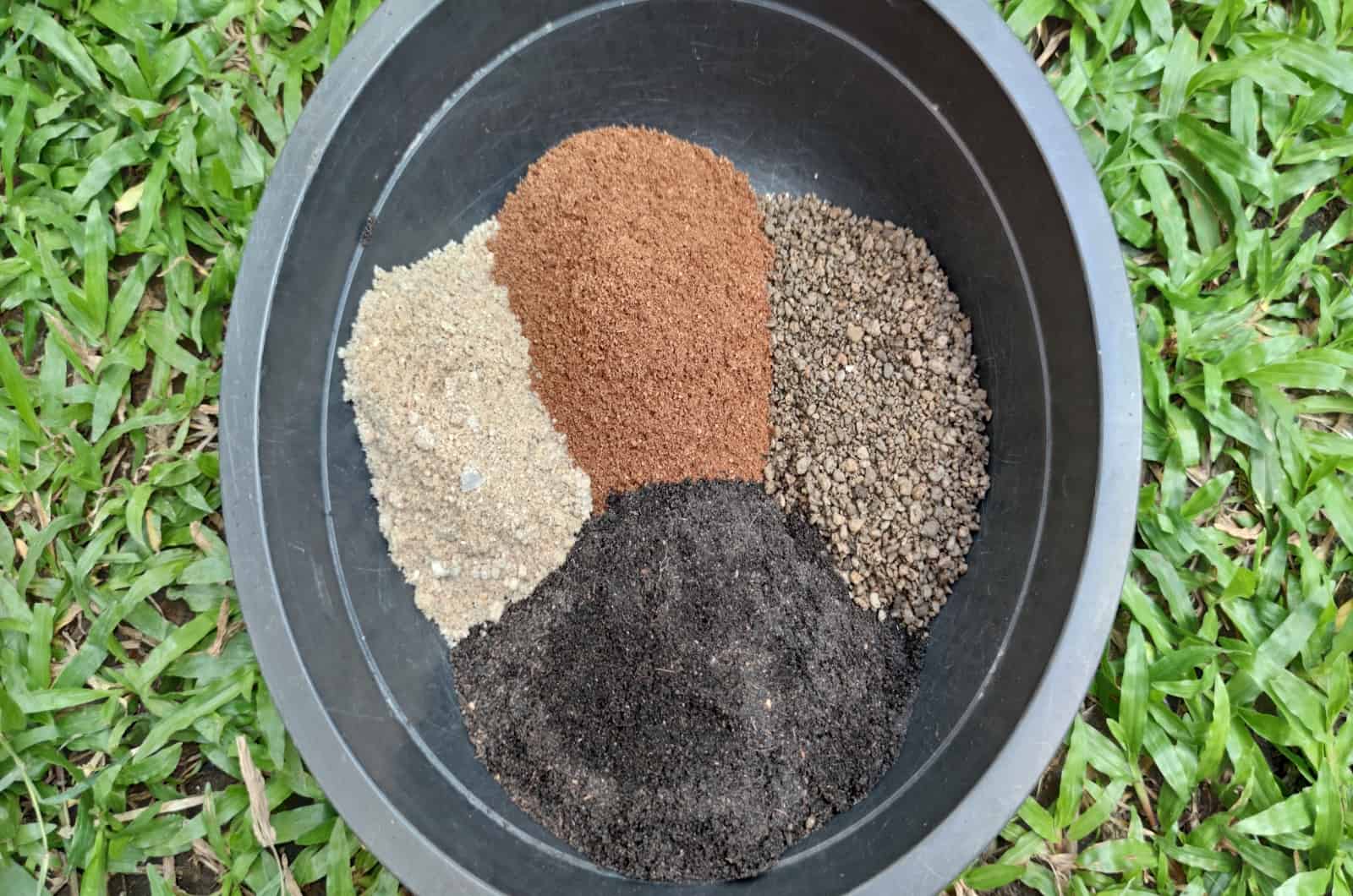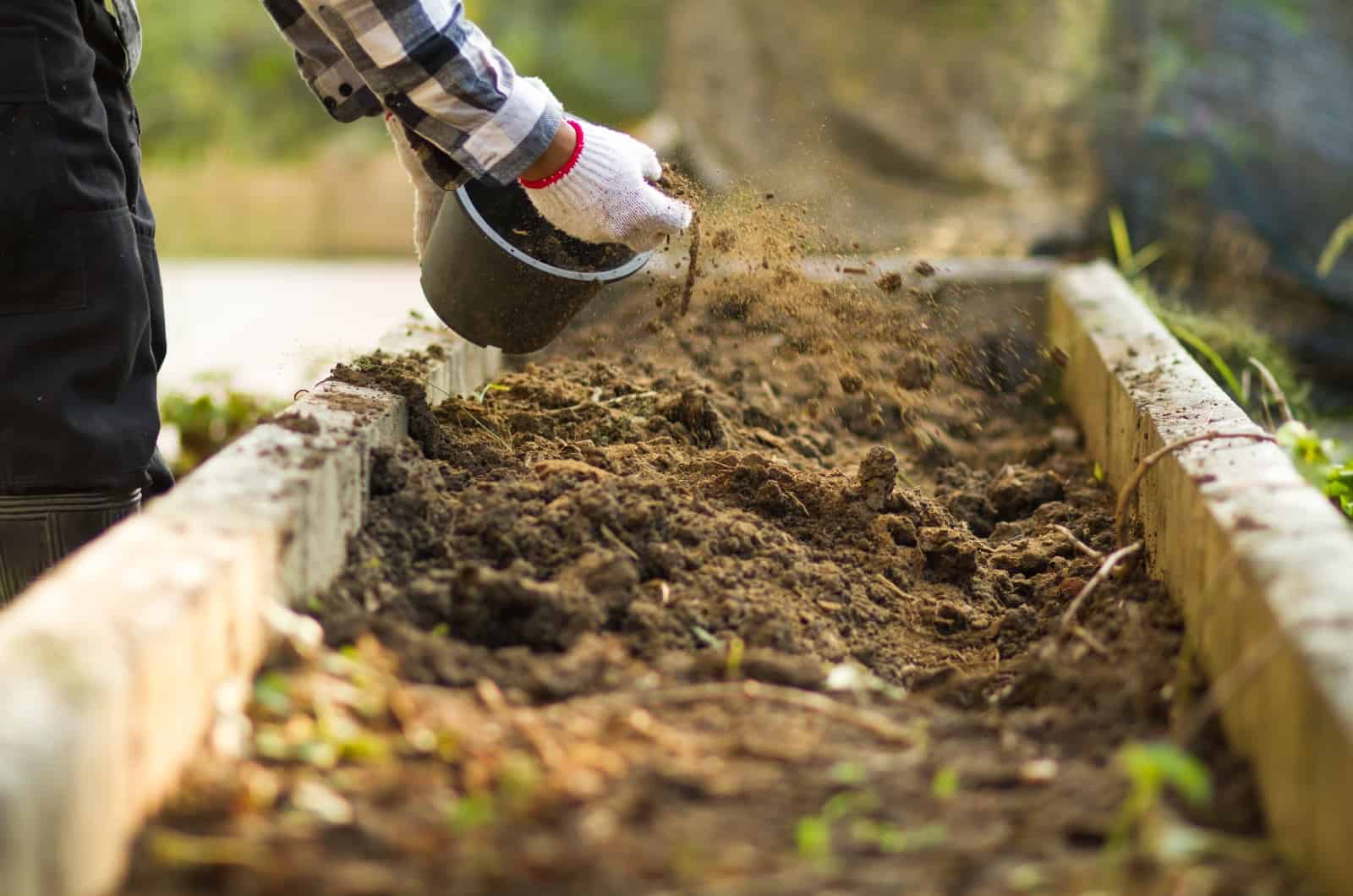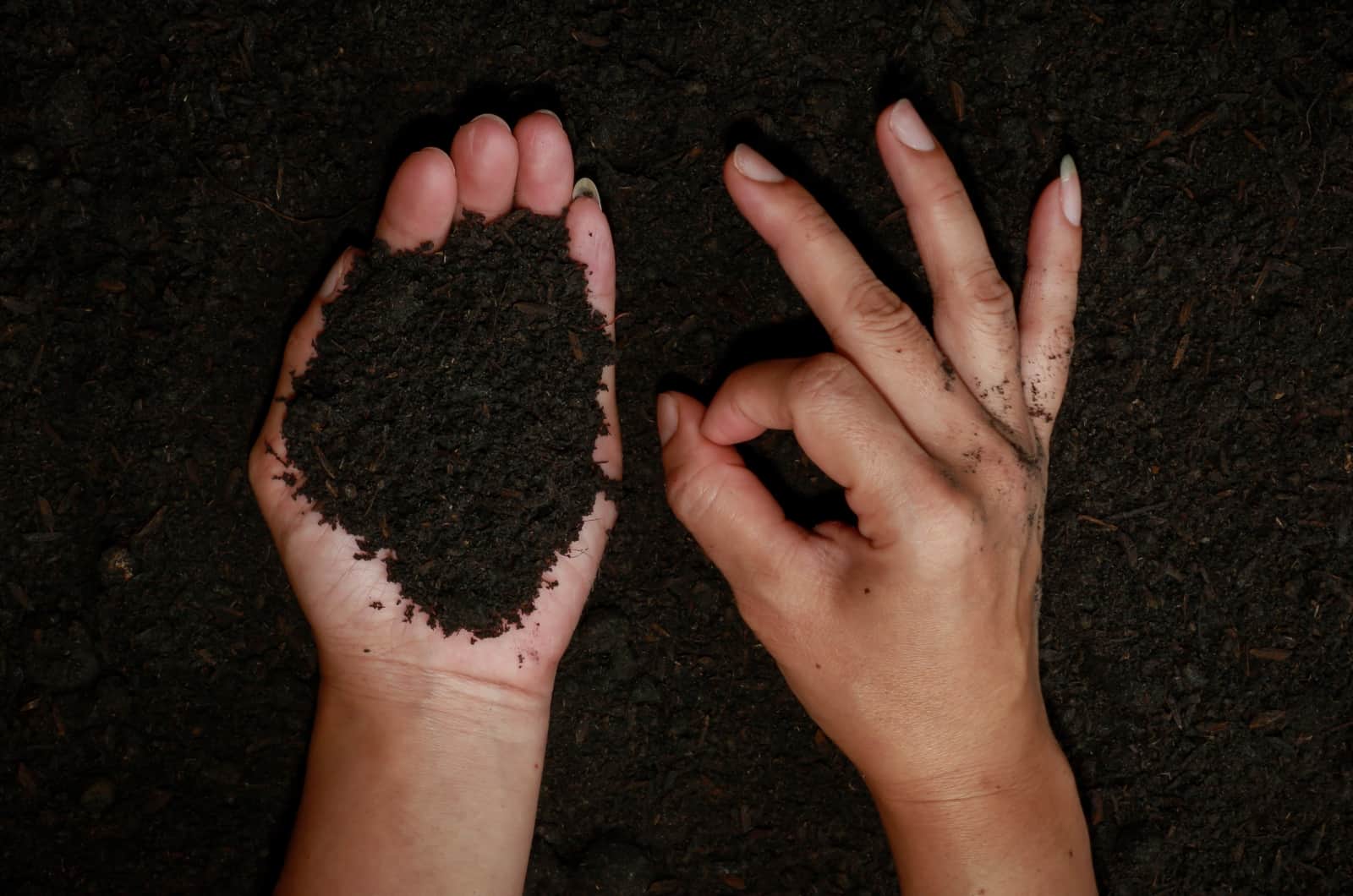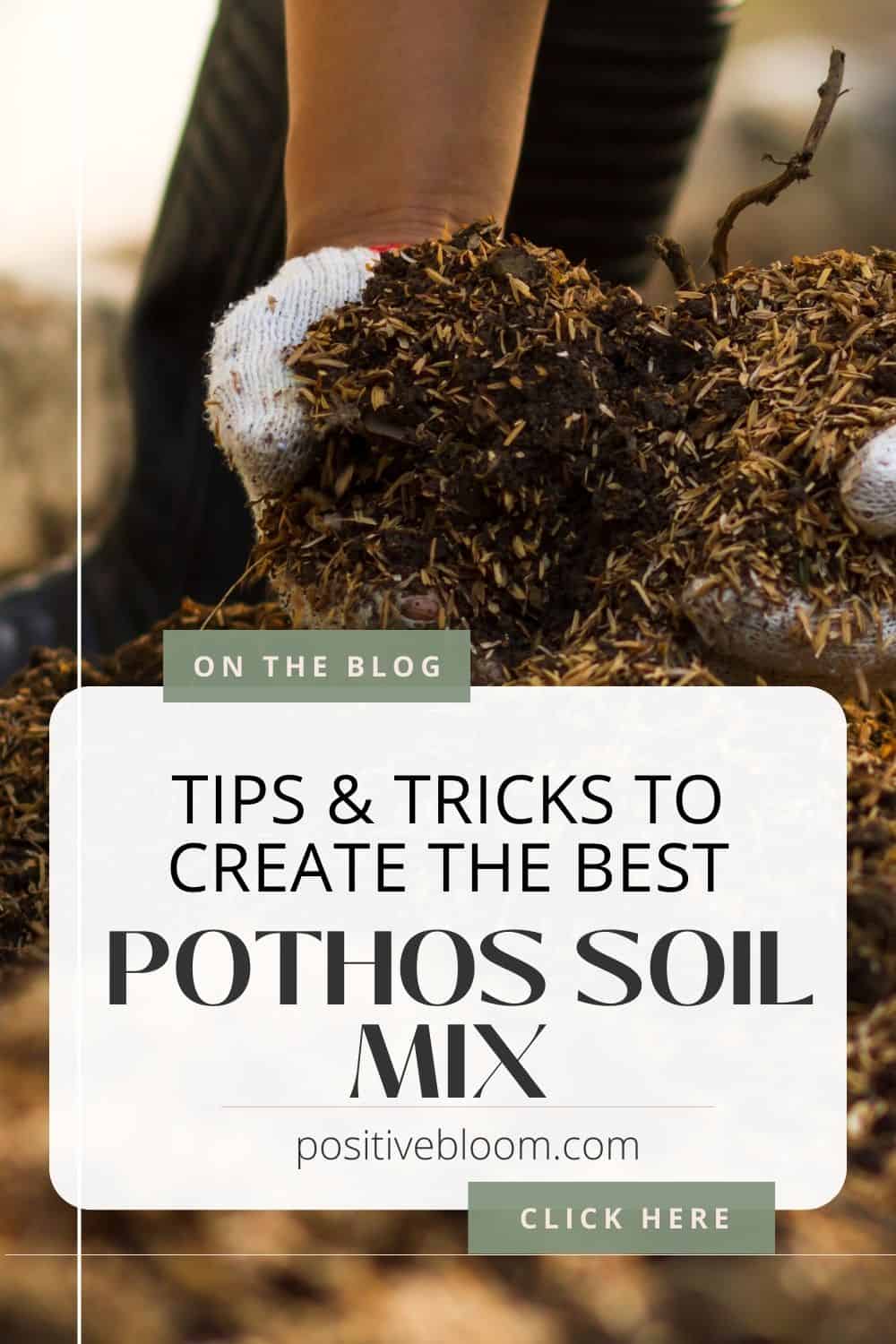Pothos plants (Epipremnum aureum) are one of the easiest plants to grow indoors. These tropical beauties can adapt to various conditions, although warm temperatures and higher humidity are ideal.
However, you also have to pay close attention to potting soil as it is a crucial factor that affects the well-being of any potted plant. Don’t worry, these houseplants aren’t too needy. The best pothos soil mix has to have good drainage and proper aeration in addition to some nutrients.
Let’s take a look at the perfect soil for your Golden pothos, and some things that you should pay close attention to.
Pothos Soil Mix: What To Consider
Choosing the right type of soil is the crucial part of the Devil’s Ivy plant care guide. They are tropical plants that originate from deep rainforests, which means that they are used to growing in humid and warm environments with constantly moist soil. Therefore, you will also need to keep their soil moist if you want them to grow and thrive.
This is why providing them with well-draining soil is a must.
Most tropical indoor plants have similar requirements, which means that you can use these principles for different types of pothos or other tropical beauties.
In addition, you will also have to consider a soil pH range that is suitable for pothos plants, and also the availability of organic matter.
Let’s take a closer look at the features that make a great potting mix.
Drainage
There has always been a bit of confusion about pothos plants needing drainage — the ultimate conclusion is yes, they do need drainage in order to live happily and healthily. We have already mentioned that pothos are tropical plants native to deep rainforests, and are accustomed to soil that is constantly moist. As a result, they require frequent watering.
Without drainage, excess water remains in the soil all the time because it can’t drain. Keep in mind that they prefer moist soil—which is distinct from wet soil—but not the opposite.
I should point out that some people don’t use pots with drainage holes for growing pothos. They let the soil totally dry out between waterings, but this is a dangerous strategy.
Why wouldn’t you give your plant the greatest care available?
Growing them in pots with drainage holes in the bottom is very important because the excess water will drain through them. If you find a beautiful pot that doesn’t have drainage holes, you can always drill them on your own!
I would also recommend that you use pots made out of porous materials, such as terracotta pots. This way, the water will evaporate faster.
Remember that bad drainage usually causes an overwatered pothos, and overwatering is often accompanied by root rot, a deadly fungal disease that can completely ruin your plant. Make sure to give the plant just enough water to balance drainage and moisture retention.
Aeration
When it comes to plant care, aeration is crucial. Plants may dry out if the soil loses oxygen because the vascular failure in the plant’s roots prevents them from absorbing water.
Tropical plants have deep roots, which can restrict their growth when potted and grown indoors. However, if you use the right soil mixture, you can prevent this. Soil that’s too compact might prevent the air from reaching the pothos roots, which will end up restricting growth and causing wilting — this is why clay would probably be the wrong soil for your plant.
However, when the soil is loose enough, such as sand or loam, the oxygen will be able to reach the plant’s roots; thus, your plant won’t suffocate indoors.
Not all pre-mixed soils have this feature, which is why you have to be careful when buying one. Don’t worry, I’m sure that your local garden center will be able to help. You can also try and make your own pothos soil.
If you have an aroid mix or orchid soil lying around, you might as well use them for your pothos. I wouldn’t suggest using succulent soil because there is almost no water retention.
The pH Levels
The soil will remain at the proper pH level if some peat moss is added to the substrate.
Pothos thrive in slightly acidic soil that has a pH range of 6.1 to 6.8. This plant won’t be able to absorb water and nutrients from the soil if you grow it in an alkaline medium.
However, too much acid in the soil might harm your plant because it can also result in element toxicity or deficiency.
For instance, if you plant your pothos in extremely acidic soil, it won’t have enough phosphorus, calcium, or magnesium and will also get heavily contaminated with aluminum and manganese.
On the other hand, if you grow it in alkaline substrates, you run the risk of sodium toxicity, as well as deficits in boron, zinc, copper, and manganese.
As a result, if you leave your plant in the soil for an extended period of time, always test the pH and add some dolomite lime if it’s too acidic, or an acidifying chemical if it’s too alkaline.
Nutrients
Because the native environments in which pothos plants evolved were so organically rich, you should give them a lot of nutrients in their growing media.
To properly grow their lovely pothos leaves, which require a lot of minerals, you should acquire potting soil that has plant food in it. If you’d rather make your own substrate, you can also mix in some fertilizers.
You can always choose organic fertilizers instead of synthetic ones, and add some worm castings or compost before planting.
It is important that your growing plant receives enough nutrients, especially during the growing season. This is why we often fertilize them during this period and avoid fertilization during winter months, as these plants enter dormancy and are not actively growing.
Pothos Potting Mix: What To Add
Adding specific materials to make the best soil for your plant is relatively easy. All you have to do is add some to a store-bought potting mix, and you are good to go. You must invest in some high-quality potting soil if you want your plant to grow and thrive.
For instance, Miracle-gro indoor potting mix is amazing, but it is often out of stock. Therefore, we must learn to make our own potting mixes!
Here is a list of materials that are extremely beneficial:
• Perlite — resembles styrofoam, and is useful for retaining just enough moisture for your plant. It is also light and airy.
• Vermiculite — a hydrated mineral that makes the soil porous and promotes water and nutrient absorption.
• Pine bark fines — aids with water absorption and provides nutrients as they slowly decompose.
• Shredded bark — creates air pockets and improves drainage.
• Coco coir — keeps the pH slightly acidic, is a great fertilizer absorbent, creates air pockets, and can be used as mulch. It is also a great peat moss alternative.
• Peat moss — lightweight and extremely absorbent material that is typically harvested from moss bogs. This component is frequently the main base in indoor potting mixes, along with coco coir.
• Orchid bark — great for aeration and drainage.
How To Make Your Own Potting Soil
It’s time to create your own soil combination now that you are familiar with all the characteristics of the best potting soil.
For a decent soil mix, you don’t need many additives; simply use materials with a high proportion of organic matter, and make sure there is appropriate aeration, water retention, and drainage.
Potting soil or Miracle-gro works as the basic substrate, and you can simply upgrade it to meet your plant’s needs.
The first step is to include some substances that will maintain the ideal degree of drainage and water retention. Sphagnum peat moss can be added to do this.
Coir (you can always use coco coir) and at least one percent perlite or pumice are additional additives that help with water drainage.
These two components will be your main weapon against root rot.
You can always count on vermiculite as an ingredient if you think your plants are getting a little too dry, as it is excellent at retaining moisture.
The best materials for aeration are orchid bark and horticultural charcoal. Orchid bark may make your mixture chunkier, but it will also strengthen the roots of your plant. Horticultural charcoal will also remove any contaminants your soil may have.
Making your own soil mixture gives you complete control over the type and quantity of fertilizers they include, which is by far their best feature. Worm castings are the most natural solution, and Earthworm Castings are our particular favorite. These give your plant all the vital minerals and nutrients it needs.
Pothos Soil Mix Recipe
Now that we have covered the process of making your own potting soil, let’s look at some of the best pothos soil mix recipes. You should take into consideration the plant size when making your own potting soil.
Recipe No.1
• 4 Parts Peat Moss or Coco Coir
• 2 Part Perlite
• 1 Part Vermiculite or sand
• 1 Part shredded bark
Recipe No.2
• 2 parts peat moss or coco coir
• 1 part perlite
• 1 part pine bark fines
Recipe No.3
• 10 parts Coco Coir
• 5 parts Perlite
• 4 parts Vermiculite
• 1 part Compost
Signs That Your Pothos Needs Different Soil
There are often signs that your pothos plants need a different soil type. Remember, we already talked about drainage, aeration, and nutrient availability, and these are all crucial when growing plants indoors, especially the ones that originate from tropical regions.
Therefore, if you see some of the signs mentioned below, it is time for repotting. If you don’t repot your plant soon, you might have to find a way to revive your pothos plant.
Let’s take a closer look.
Yellow Leaves
Yellow leaves are usually a sign of overwatering and root rot. However, these two are directly linked to the potting soil. The most frequent culprit is undoubtedly improper watering, but growing this plant in a medium that is either too heavy or too light might make things worse.
Neither an overwatered nor an underwatered plant can take in the nutrients and moisture required for proper growth, which causes the production of chlorophyll to decrease and the leaves to lose their lovely green color.
If the soil is too heavy or doesn’t hold enough moisture, amend it with perlite, sand, and orchid bark. If the soil doesn’t hold enough moisture, amend it with ordinary soil and coconut coir.
Root Rot
The roots are the most important part of your plant, and the first thing that the fatal fungus known as “root rot” targets.
This pathogen will utterly destroy your plant before you know what hit it!
Since this fungus grows in moist soil, root rot is typically the result of persistent overwatering. Root rot is most likely the cause of yellowing foliage and any unpleasant smell emanating from the soil.
In this case, repotting is necessary to rescue your plant. Remove any dead or decaying roots when repotting, and always use fresh soil that has not been contaminated with fungi.
Droopiness
Your pothos is likely drooping due to a lack of soil moisture. Although inadequate soil can be a concern, infrequent and sparse watering is the most prevalent cause of this symptom.
Your plant won’t have time to consume what you feed it if the substrate drains too quickly. If you observe this symptom, test the soil since it may be caused by poor soil pH and nutrient levels.
Finally, too much fertilizer and too much soil moisture might also have the same result. They can clog, burn, or cause the plant’s roots to decay. They can also induce mineral buildup inside the plant, which obstructs water and nutrient intake.
This often occurs if you grow your indoor plant in soil that is not well-draining, and you are probably giving it more plant food than it actually needs.
FAQs
1. Can I use succulent soil for pothos?
No, I would not recommend using succulent soil for pothos plants, as it drains the water too fast and doesn’t contain the moisture retention properties that pothos plants need. Pothos are tropical plants that are used to growing in constantly moist soil, which is why it is crucial for their soil to have materials that can absorb and retain water.
2. What is the best soil for pothos?
Pothos plants thrive in well-draining soil that is also porous and rich in nutrients. Overwatering is a common issue with this plant species, so providing it with proper drainage is a must. By using the right soil mixture and buying a pot with drainage holes in the bottom, extra water will be drained effectively. If the excess water is retained, it will probably lead to root rot.
The ideal potting mix can be made by combining peat moss, perlite, universal soil mix, and vermiculite. You can see some great recipes above!
3. How often should I water my pothos?
In general, water your pothos every five to seven days. However, always thoroughly check the soil before watering.
Pothos plants need moist soil, and if the soil gets too dry in between waterings, it will wilt and get crispy leaves. The leaves of your pothos plant will curl inward if it becomes thirsty. If you detect any of these changes, water your pothos thoroughly.
I advise you to make your own watering schedule by keeping an eye on the plant and checking the soil frequently to determine whether it needs to be watered.
Allow the top 2 inches of soil to completely dry out before watering. Sticking your finger into the soil is the simplest way to determine its moisture content. If it still feels wet, then postpone watering for a few days.
During the winter, pothos plants enter a dormant state and need less water and nutrients. As a result, you shouldn’t water it as frequently.
To Sum Up
Making your own pothos soil mix is relatively easy, though you can also use store-bought ones. I always recommend making your own potting mixture because you can combine specific materials that are needed to meet your plant’s needs.
For instance, if your plant likes moist soil, then adding perlite will definitely help with water retention. Adding shredded bark will create those little air pockets that will help the plant’s roots to breathe.
You can also add some plant food to improve the nutrient content, in addition to fertilizing during the growing season.
It doesn’t take much to make your plant happy, and I’m sure your pothos will love the potting mixture that you made!
I hope this article was helpful.
Until next time!
Like this post? Share or pin it for later!

